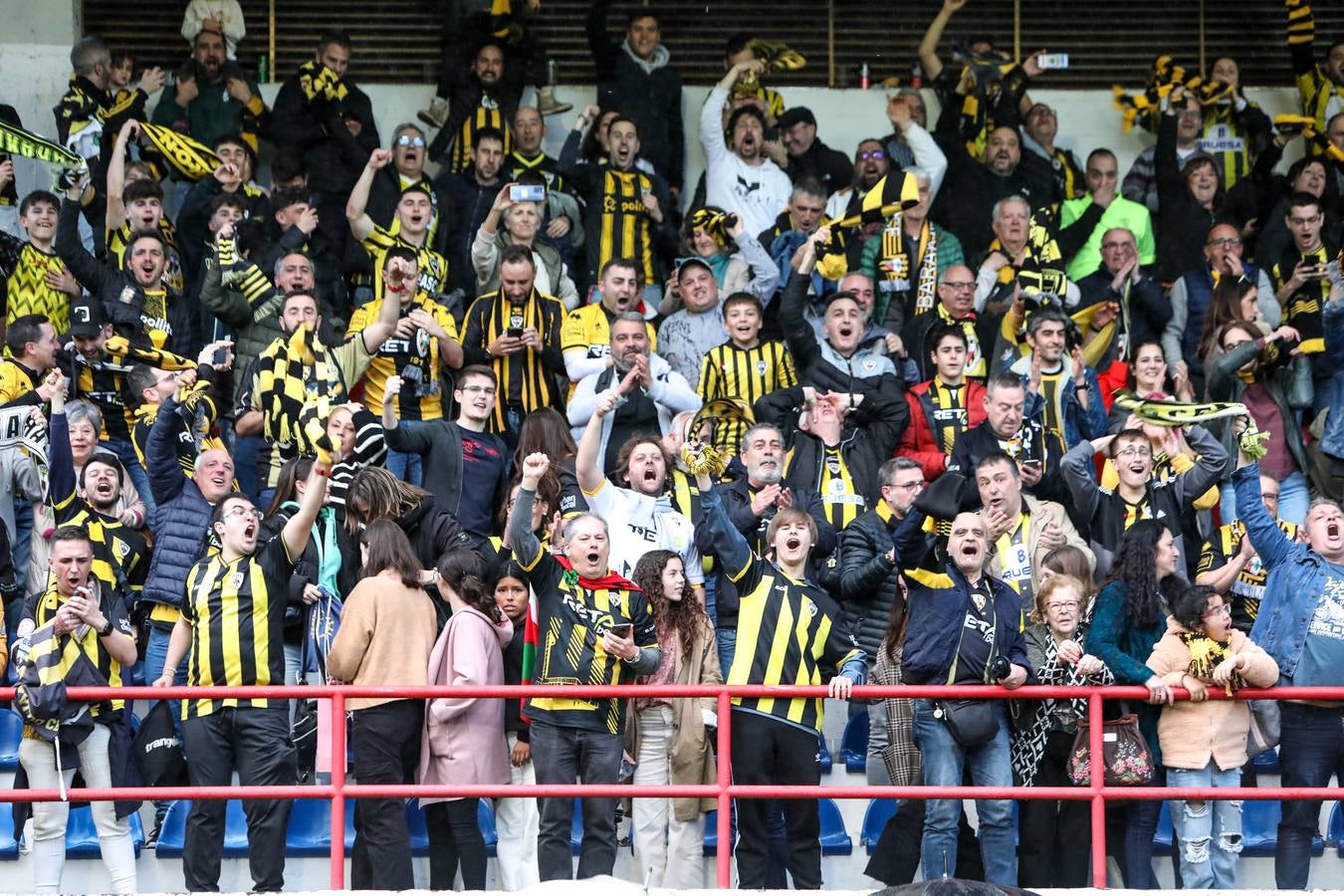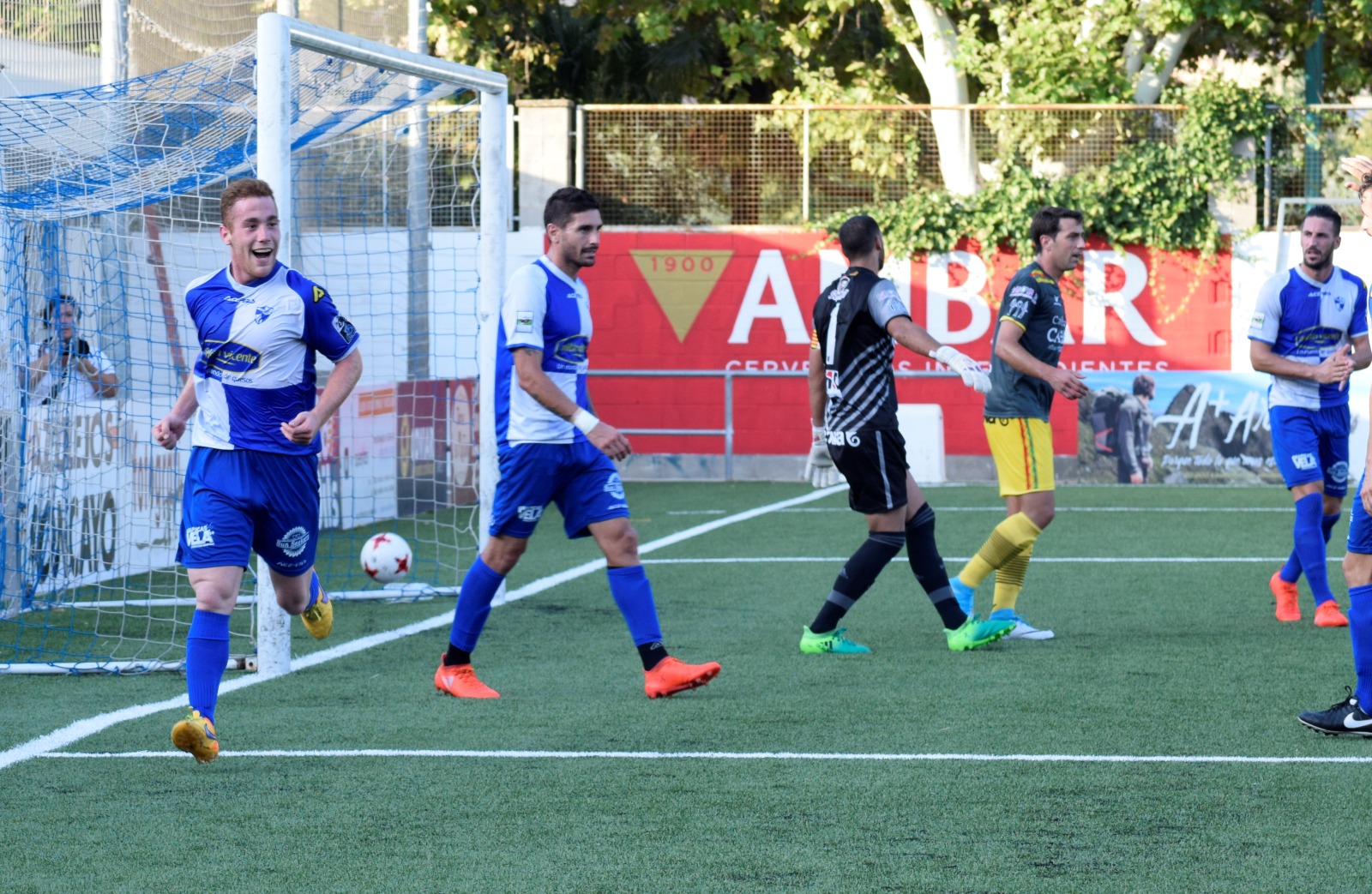Why do teams use the colors for their kits that they use?
The majority of the football clubs have a distinct color, which they might use in their logo, shirt, or stadium. Think of how Barcelona uses the characteristic combination of dark red and dark blue, how everyone would associate yellow with Villarreal, Las Palmas, or Cádiz, or how Rayo Vallecano is known for its red stripe. The choice for a certain color or a combination of colors can be based on many arguments, the most frequent one being the flag of the city, province, or region of the club. However, there exist some interesting stories about the origin of the colors of a club. Let’s take a look at the most exciting ones in the lower leagues of Spanish football. This is…Curious Colors: part II.

Atlético Sanluqueño
Atlético Sanluqueño was founded in the middle of the 20th century and has used green and white stripes since that moment. The origin links to José María Domenech, a lawyer from Sanlúcar de Barrameda, who was the president of the Andalusian Football Federation at the time. He did not only have a good relationship with the team from his hometown but also with Real Betis. When Atlético Sanluqueño did not have a kit yet, he talked with people at Betis, who sent a set of full green-white Betis kits to Sanluqueño. The club was so grateful that they would never choose different colors again.

Barakaldo
The origin of the black and gold stripes of Barakaldo is rather different. Even though the story cannot be confirmed, the most accepted theory explaining the choice for the uncommon colors relates to one of the core elements of the identity of the city of Barakaldo: industry, as the city’s population and economy grew exponentially during the Industrial Revolution. Its football team would use black as a reference to the smoke coming out of the Basque factories and gold as a tribute to the wealth that the city gained through the factories.

Ebro
CD Ebro is the representative team of La Almozara, a neighborhood in Zaragoza, and was born in 1942. Right before its foundation, one of the founding members visited the Catalan city of Sabadell for a business meeting and decided to watch a game of CE Sabadell FC while being there. The shirt of Sabadell caught his attention: white and blue blocks. He proposed this design at the foundational meeting of Ebro, after which everyone present agreed. Even though the Aragonese club has very modest origins, they reached the Segunda B in more recent times, playing for the first time against Sabadell, a club with which they built up a good relationship.

Gimnástica Segoviana
Gimnástica Segoviana plays with the red and blue stripes that FC Barcelona also uses. And, just like the story about Leioa in Curious Colors: part I, there might be a link between Barça and this smaller team, even though there’s no consensus about why the club plays in these colors. The most accepted theory relates to how Barcelona used to visit Segovia yearly for some pre-season matches. Another theory says that a Swiss engineer living in Segovia proposed these colors because they were the colors of his canton’s flag. Whatever explanation is correct, the colors have never changed.

Marino
Marino uses a very dark tone of blue: marine blue. Note that the club name is similar to this color, which is no coincidence. The Asturian side was founded by seamen, who dedicated its name, shirts, and stadium name (‘Miramar’, which means ‘Sea Sight‘) to the sea. In the following decades, no one dared to change the club’s identity, which means that Marino is still known as ‘the club of the sea’.

Palamós
In 1905, the first tournament in the province of Girona was organized after the rapidly growing popularity of football. The prizes were prestigious: an impressive trophy and the right to play in yellow and blue stripes, the colors of the maritime province of Palamós and, therefore, Girona. Every club in the area wanted to win the tournament to earn the eternal right to this esteemed kit, among which Strong FC, the precursor of Girona FC, and Palamós FC, the oldest football club in Catalonia. Finally, the latter club was crowned champion and has played with yellow and blue stripes ever since.

Prat
The case of Prat is unprecedented. And even more because the curiosity lies in the shorts, not in the shirt, which is plain white. The shorts are blue, and that is the case for a particular reason. The Catalan city of El Prat de Llobregat is known for its locally bred chicken breed, Gallina del Prat. The chickens have slate blue paws, for which they are called potablava (‘blue paws’). The directives of Prat decided to copy this style and give the players of their team ‘blue legs’ by wearing blue shorts. By the way, the players of Prat are also called potablava.

UCAM Murcia
UCAM Murcia is a club sponsored by the Catholic University of Murcia (UCAM), allowing the university to incorporate its name into the club name. Besides the name, the logo, and the prominent presence of the university name on the front of the Murcian side’s shirt, the university has managed to alter yet another element of the club’s identity: the colors. The university’s colors are dark blue and gold – a common combination in universities, an uncommon combination in Spanish football, which was implemented at the football club. Ever since, UCAM Murcia has played with a dark blue shirt with golden elements.

Sources
- Borchers, L. (2021). GOLAZO. Self-published.
- Borchers, L. (2022). CARA O CRUZ. Self-published.
- https://atleticosanluquenocf.com/historia/
- https://cdebro.com/2019/11/23/historia-y-precedentes-del-derbi-arlequinado/
- http://hemeroteca.mundodeportivo.com/preview/1994/11/11/pagina-30/1285895/pdf.html
- http://lafutbolteca.com/ucam-universidad-catolica-de-murcia-club-de-futbol/
Leave a comment